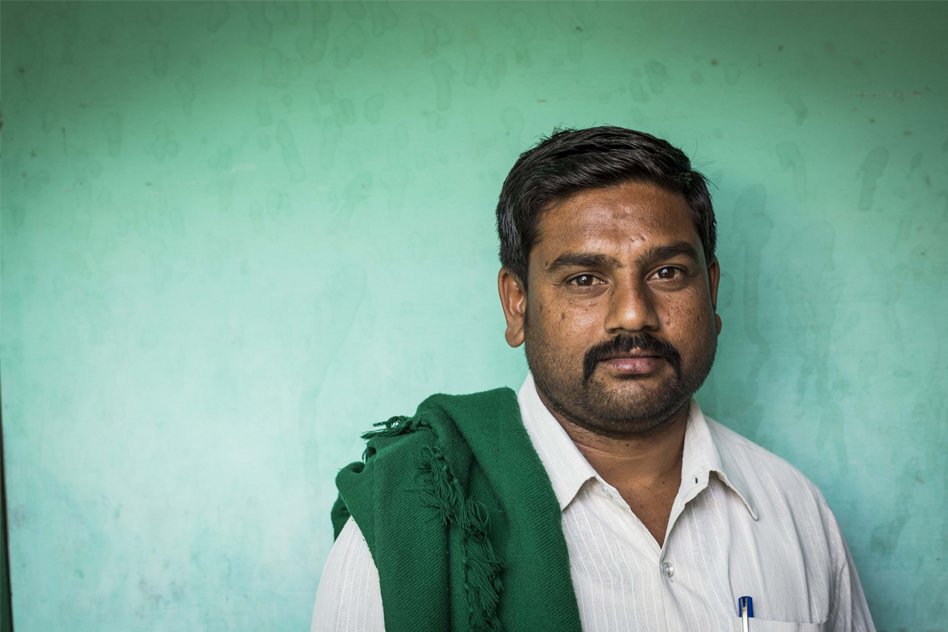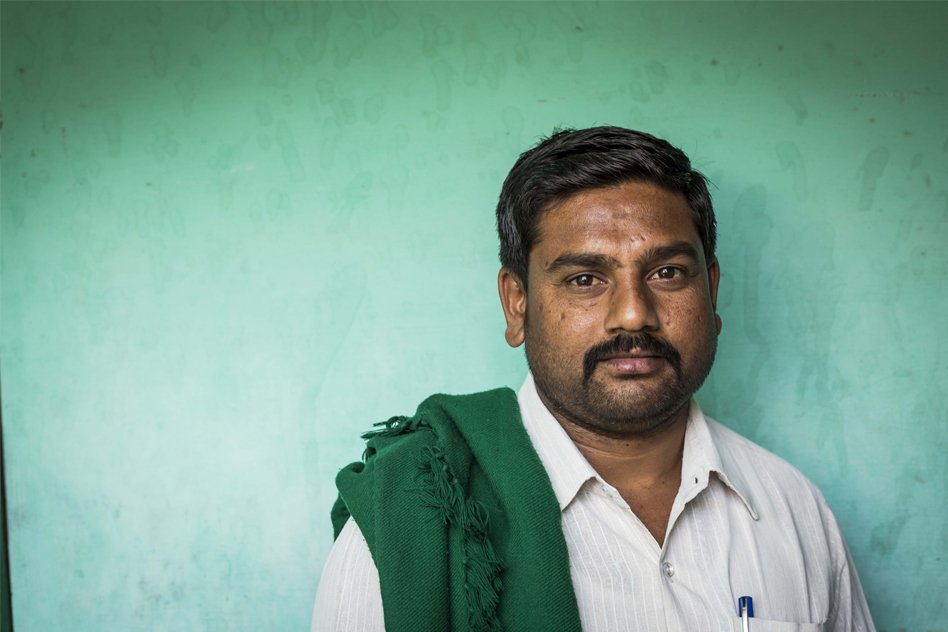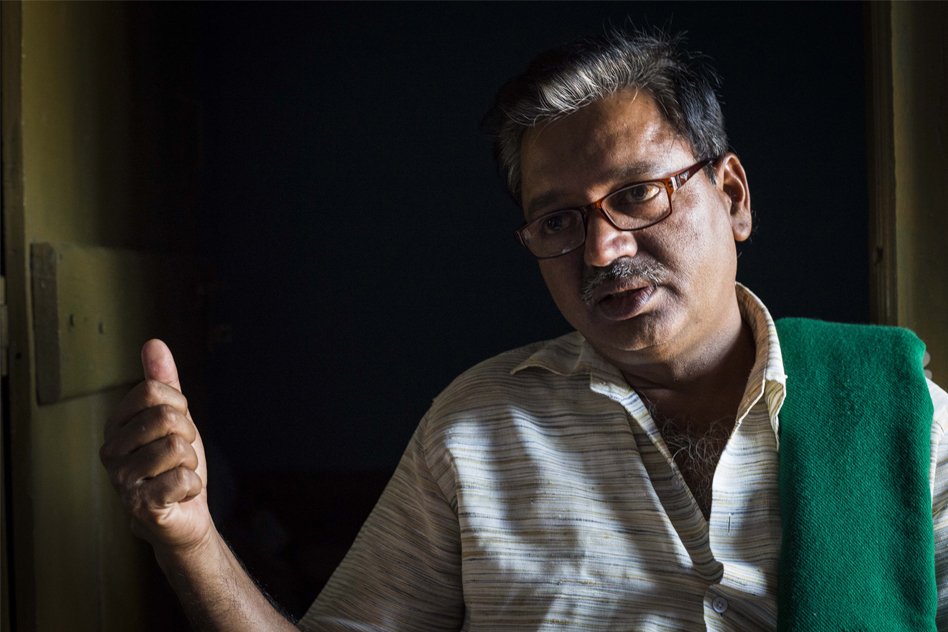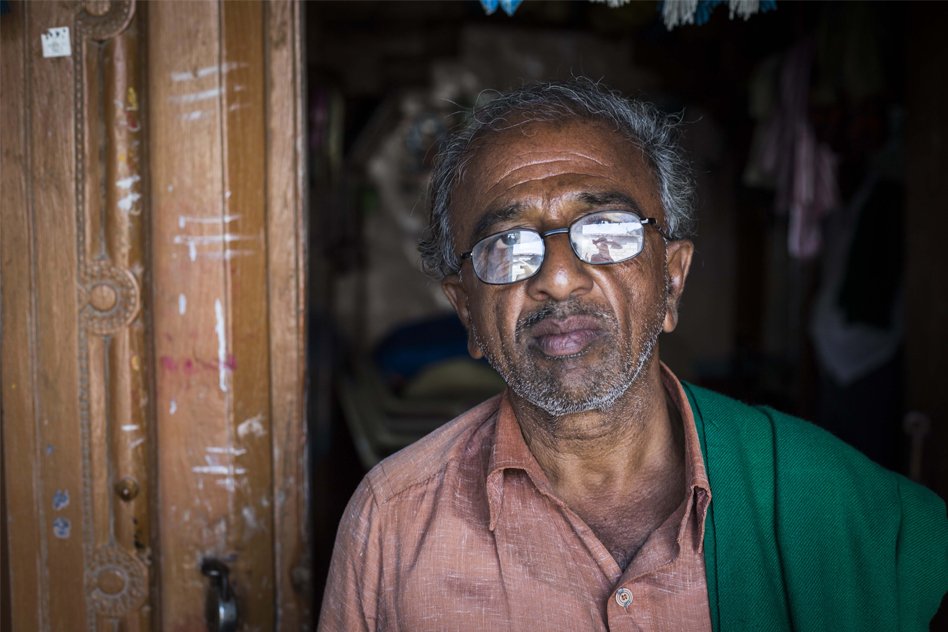
Decoding The Root Causes Of Agricultural Crises In The Land Of Debt-Ridden Farmers
27 April 2016 2:09 PM GMT
“At around 7.30 am, against the crisp morning air, we continued forth towards our destination. Unfettered by gusts of drear winds, the hills loomed mistily above us as we drove past many a forlorn fields, that winter morning. Sprawling across the road no more than thirty paces from our car, we spotted a resort to our left. As we gorged on some idlis and upma, we caught sight of a few children running recklessly alongside pathways dodging thickets and barking out instructions at one another. We soon left the restaurant and took a detour several miles away into lanes that led to Davangere. Meanwhile, we called up our point of contact — Devaraj — to inform him that we had entered the city. He then gave us directions to the new KSRTC bus stand. It was 9 am. A dull haze hung around the city as coconut and sugarcane sellers swarmed into busy junctions. In about twenty minutes, we inquired with a few locals if we were headed the right way.
Amidst a cornucopia of hawkers and street vendors, a gentleman walked towards us and said, “Is it ok if I accompany you to the bus stand? I have to go there too.” We readily agreed and proceeded towards the main market. His name was Basavaraj. In conversation, he mentioned to us that he handled import and export of maize from the district. We asked him how farmers fared last season. His smile dropped instantly as he explained, “Small scale farmers are always suffering, saar. For them, life is a constant struggle. This isn’t an infertile belt but the weather has been unkind to us for a few years now. Moreover, there are other inhibiting factors that affect farming at large.” He then gestured to stop the vehicle and advised us to follow the road up ahead. Surging crowds clamoured for attention as autorickshaws and buses rode in transporting passengers to their destinations. We soon reached the bus terminal and rang Devaraj once more. Clad in a plain white shirt and trousers, he adjusted the green shawl over his shoulder as he beckoned us to follow him. It was only later we learnt that the shawl symbolised solidarity with the farmers. We parked the car outside the Karnataka Rajya Raitha Sangha (KRRS) office and climbed the dark labyrinth of stairways leading up to a tiny room.
 Devaraj
Devaraj
A shaft of light shot across the office as a brief glance at its occupants earned us a nonchalant but polite greeting. Unfolding in the corner of the dimly lit room, were discussions surrounded the impending Panchayat elections. We sat on the floor amidst a small gathering of men above whom hung the portrait of Dr Nanjudappa. Seated beside us was a bespectacled farmer activist Arun Kumar. He gave us a warm smile and asked us why we were here. We explained to them who we were and what we intended to achieve in Davangere. A hushed silence loomed in the air as the men expressed with great angst the weary plight of farmers and their ongoing struggles.
“In 1992, a major movement ensued within the agrarian community. Farmers across the country protested against the central government’s decision to withdraw subsidies provided to them. The authorities failed to take into consideration the impact it would have on the entire community and especially small scale peasants. Here, in Davangere, the situation led to farmers fighting against policies that were detrimental to agriculture. They protested for more than fifteen days. Highways were blocked as scores of villagers demanded the government to revoke its decision. In Anabodu, two farmers were shot dead by the police forces. This was the tipping point. Those who wished to voice their concern and dissent over such policies that only benefitted large scale conglomerates were not only suppressed but silenced permanently. After this incident, organisations were set up to address and protect farmer rights. Therefore, this led to a revolutionary movement whose sole purpose was to unite farmers all across the country. And, for the first time in history, despair turned into hope,” said Arun.
 Arun Kumar
Arun Kumar
In the nineties, India was in the midst of a massive fiscal crisis which eventually led to the proliferation of the New Economic Policy (NEP) of 1991. The scheme was strategically adopted as a part of the Structural Adjustment Programmes (SAP) — a set of economic policies devised in the early eighties for developing countries by the World Bank and International Monetary Fund (IMF) by putting forth conditions that required nations to condone with their rules in order to be eligible for procurement of loans. Primarily, SAPs were designed to acclimatise foreign investment by nurturing export-oriented growth, privatisation and promoting a gross reduction in government deficit by eliminating unwarranted expenditure. Not only did it entail the complete abolishment of food and agricultural subsidies but it also propelled currency devaluation thereby maintaining a steady rise in import costs whilst curtailing the value of goods produced locally. Although our leaders claimed this was perhaps one of the most radical programmes conceptualised as a part of economic liberalisation, it proved to be deterrent to creating an unprejudiced social order within the nation.
Thus, in doing so, both the aforementioned institutions bullied already debt-ridden developing nations into adapting or framing policies under the false pretext of development and globalisation that were destructive to their own populous and agricultural machinery in order to be eligible for further loans. Tailored to providing unrestricted global access to capitalist economies, the Organisation for Economic Cooperation and Development (OECD) catalysed “free” market, trade and investment unleashing a plethora of measures that not only impaired democracy but also violated the rights of individuals residing in developing countries. Free trade and its accompanying investment policies essentially bred dependency in post-colonial nations striving to rebuild their economies by slowly destroying a sector that formed the lifeline of any society — farming.
With support withdrawn from the government, farmers found themselves steeped in debt. In the pretext of facilitating rapid rural economic development, our existing policies were restructured in order to accommodate the privatisation of our natural resources apart from ensuring unhindered acquiring of farmlands by massive business conglomerates as farmers struggled to make ends meet. The neo-liberal model propagated a system wherein long-term stability with respect to food and agro-economy was suppressed while utmost importance was placed on making profits within a shorter period of time. It also brought forth a new set of problems with respect to the ‘seed market’.
Soon, seed prices were hiked in an unprecedented manner and fake seeds were pumped into the farming sector. Moreover, in an attempt to amalgamate Indian farming industry with the global economy, agricultural commodities were imported at much higher prices while locally-produced goods were sold at egregious rates. And, for the first time in history, rice riots, corn wars, wheat rebellion and seed agitation formed the basis of protests looming in lands wherein the largely ignored section of society hoped to trample policies that advocated government-sanctioned upheaval against those who opposed their prejudiced conduct.
Earlier, farmers had complete access to seeds supplied to them by state-run government institutions. However, over time, these policies destroyed the regulated market and threw the country open to global agricultural businesses. Armed with objectives that advocated no dialectical propositions in refining agronomy, companies like Monsanto and Cargill hoped to monopolise the farming sector by contaminating the seed supply which forms the vital core of agriculture. Decimating the pulse of cultivation, the clout these transnational ‘seed corporations’ wield over agriculture has proven to be calamitous for both the farmer and his/her land.
“Duplicate seeds have only proven to been detrimental to farming. Multinational companies who gained a strong foothold in the technology and food sector have destroyed the ethos of agriculture. These seeds can only be used once. They have to be bought every year. While some of these rules were amended later, the damage was already done. The seed supply is being controlled by huge organisations. There aren’t any good organic seeds in the market anymore. For instance, genetically modified cotton seeds pose a dire threat to farmers today. They have no option but to invest in them. In order to ensure that farmers aren’t further exploited by intermediaries, the state government then established an agricultural produce market committee (APMC). The sole purpose of the committee was to make sure that farmers are able to sell their produce at reasonable rates through mandis (markets). The Mandis buy from farmers at lower rates and sell to final consumers at higher rates thereby earning a double commission. And, yet again, the vulnerable farmer is exploited,” said
Arun who has been an active member of the KRRS for almost 25 years.It soon dawned on us that in a selfishly driven hierarchical society where each level exploits the one below, the responsibility of looking out for the welfare of farmers was placed in the hands of the very people who exploit them. Hence, it comes as no surprise that APMCs have been a monumental failure in protecting farmer’s rights to get a fair price for their produce.
With elbows splayed across his knees, Maheswara Reddy lifted his head and riveted his eyes on the staircase. Twirling strands of threads around his fingers, he uttered an exasperated snort as he explained the plight of farmers embroiled in the vicious cycle of loans and debts. “Banks don’t provide farmers with adequate monetary aid and we are forced to take loans from private financiers or sahukars who offer us funds at exorbitant interest rates. It is a huge task to pay them back. What else are we supposed to do? How else do we survive? With soaring input costs and low yield, we are constantly struggling to pay our bills. We are debt-ridden till we die,” said Reddy.
 Maheswara Reddy
Maheswara Reddy
Arun furrowed his eyebrows as he chimed in to concur with Reddy. Sugarcane and paddy grows in abundance in these areas and Davangere too boasts of a few sugar mills. “Unfortunately, the price of sugar has fallen down drastically. Farmers aren’t getting good rates for their produce. And, yet again they are operating in complete loss. It’s a cycle we are accustomed to now. Fluctuating weather conditions have had a devastating impact on cultivation over the past ten years. And, these areas are highly prone to drought. Some years we receive copious rainfall. Some years we long for a drop of rain to caress the soil. All we can do is wait; wait for a sign of hope,” he said as he sipped his tea.
While agriculture is highly dependent on climate patterns, farming techniques have seen meagre improvement in building resilience to aggressive weather fluctuations. We wondered aloud if farmers have evolved with respect to methodologies and techniques today. “Of course, some have changed their style in order to ensure a better yield. But these numbers are minuscule. The others are still dependent on old techniques that were passed on to them by their forefathers. Farmers need to be educated on the ever-changing characteristics of nature. They should be equipped to adapt to variable climate,” he said. Small-scale farmers who can’t afford to irrigate their lands migrate in droves to cities in search of better livelihoods while those who manage to water their farms find themselves at the mercy of nature’s unpredictability, yet again. During the sowing season, most of these areas receive unexpected rainfall and just before harvest they are plagued by hailstorms in summer.
“Government needs to regularise scientific pricing of crops so that farmers do not incur heavy losses. It should also take into consideration all the variables assosiated with farming. The public distribution system has to work in the favour of farmers and not otherwise. More than often, there’s a steep fall in prices at the time of harvest,” said Reddy as he paused for a while and continued in a grievous tone, “While commissioned agents make their cut from both sides, farmers always pay a heavy price. For instance, fruit merchants buy bananas for Rs 3 per kilo while each banana is sold for Rs 4 in markets. At this rate, we have to rely on loan sharks and no one will come to our rescue.
We have been demanding price nominalisation for more than 35 years. However, citing reasons such as uncontrolled inflation, the government refuses to pay any heed to our demands. Everything is pre-determined and decided for us. We form the backbone of the food industry and we have don’t have a say in anything. We have only experienced abandonment and betrayal in our lifetime. We till the soil and nurture a seed to life. Don’t we deserve a voice? Don’t I belong in your world?”
This story is an effort by The Logical Indian in collaboration with Rest Of My Family towards bringing stories which need much attention towards agrarian crisis in India. This piece is the second journal published by Project Rest Of My Family. As a part of the first leg of the project, Piyush and Akshatha have embarked on a one-year drive (#DriveForChange) through rural India understanding, experiencing and documenting social issues and human interest stories. Through ‘Rest of My family’ , they will also focus on documenting the triumphs of the ordinary man despite all the hardships they face constantly, and help these stories reach a larger audience apart from extending necessary support to the individuals and communities that they write about.
By – Akshatha Shetty | Photo Credit – Piyush Goswami
 All section
All section
 Devaraj
Devaraj Arun Kumar
Arun Kumar Maheswara Reddy
Maheswara Reddy












